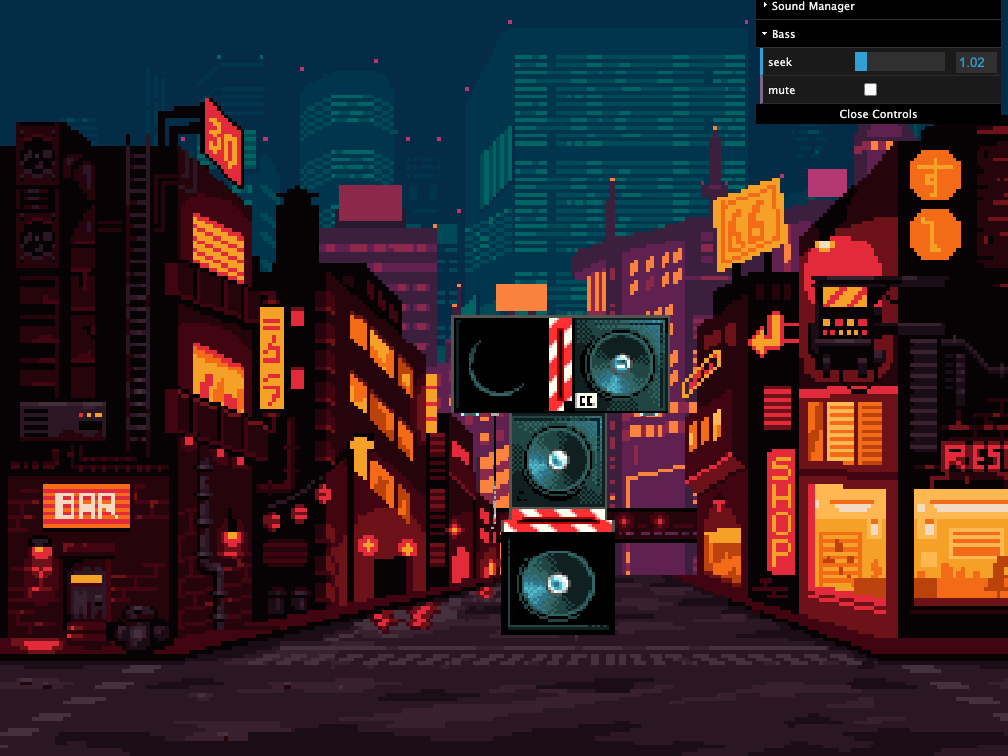

web browser) to display a timeline of 60-100 rather than 0-40 – after all, the browser could just get this out of the URL.
#Html5 audio events full#
Since relates to the full resource, it is possible to expect from the user agent (i.e. This means that if you load a URI such as, the resulting resource is a video of duration 40s. The important difference is that queries produce a new resource, while fragments provide a sub-resource. This is relevant in particular to live streaming applications, which would like to provide a URL under which a live video is provided, but also allow the user to jump back in time to previously streamed data.įurther, the W3C Media Fragment Working Group is discussing the use of both URI addressing schemes for time offsets: fragments (“#”) and queries (“?”).

#Html5 audio events code#
If a “smpte” scheme is given, the time code is provided in the way in which DVRs display time codes, namely according to the SMPTE timecode standard.įinally, a “clock” time scheme can be given. It is basically a time offset given in seconds, but can be provided in a few different formats. If there is no time scheme given, it defaults to “npt”, which stands for “normal playback time”. Having realised the need for such URLs, the W3C created a Media Fragments working group.įor temporal addressing, it currently proposes the following schemes: The Metavid video in contrast will not display a transport bar for the full video, but instead only present the requested part of the video with an appropriate localised keyframe. The YouTube video will be displayed as always, but the playback position in the video player changes based on the time offset. You may have noticed that the YouTube use of URIs for jumping to offsets is slightly different to the one used by Metavid. While most YouTube content is short form, and such direct access may not make much sense for a video of less than 2 min duration, some YouTube content is long enough to make this a very useful feature. More recently, YouTube rolled out a URI scheme to directly jump to an offset in a YouTube video, e.g. A URL such as work well to directly view that segment. This is now successfully in use at, where it is very useful since Metavid handles very long videos where direct access to subsections is critical. In 2001, in the Annodex project we proposed temporal URIs and implemented the spec for Ogg content. There are some existing example implementations that control a video’s playback time through a URL. Also, the BBC found in experiments with Firefox that “timeupdate” is more accurate than polling the “currentTime” regularly.Ĭontrolling a video’s playback through a URL Note that for subtitles it makes a lot more sense to use the existing “timeupdate” event of the video rather than creating a frequenty setInterval interrupt, since this will continue calling the function until clearInterval() is called or the window is closed. So, in the given example, every 100ms it is tested whether a new subtitle needs to be displayed for the video current playback time. The “setInterval” function is used to call a function or evaluate an expression at the specified intervall. Video.addEventListener("timeupdate", function(), 100)

Var video = document.getElementsByTagName("video") įurther, if you want to stop playback at a certain time point, you can use another functionality of the HTML5 tag: the “timeupdate” event: To jump to a time offset in a video, all you have to do in javascript is:
#Html5 audio events tv#
This is very useful to directly jump between different sections in the video, such as exemplified in the BBC’s recent R&D TV demo. Right now, you can use the video element’s “currentTime” property to read and set the current playback position of a video resource. I will explain the approaches that can be applied on the HTML5 tag for such deep video interaction.Ĭontrolling a video’s playback with javascript Such direct access can be achieved either by providing a javascript interface through which a video’s playback position can be controlled, or by using URLs that directly communicate with the Web server about controlling the playback position. We need direct access to time offsets and sections of videos. For many years now I have been progressing a deeper view of video on the Web than just as a binary blob.


 0 kommentar(er)
0 kommentar(er)
